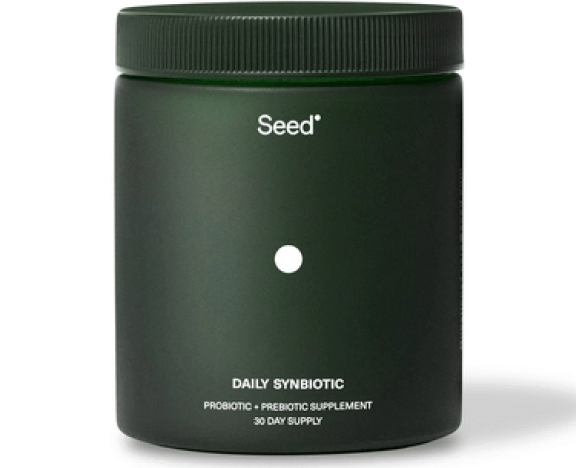What’s a Postbiotic? | Goop
If you’re gut-curious (we certainly are), you might have come across the topic of postbiotics, which are beginning to become available in supplement form.
The science of postbiotics—including what they are, how they function, and whether they’re worth taking in a pill—is still early in its development. There’s a lot that scientists don’t know yet. We’ll get into that. But to understand what we do know about postbiotics, you have to understand the basics of microbiome science, so we’ll start there.
THE GUT MICROBIOME
The gut microbiome consists of communities of different microbes—mostly bacteria and yeasts—that live in the lining of our digestive tract. This microbiome develops and changes throughout our life: Our first microbes typically come from our mothers during the process of vaginal birth and breastfeeding, and we acquire more throughout childhood, mostly from the foods we eat. Genetics plays a role, too. In adulthood, the gut microbiome tends to stabilize, but it can still be altered by certain lifestyle habits, like diet, as well as disruptions like stress, travel, antibiotic use, and certain prescription drugs.
In a healthy microbiome, the bulk of these microbes are good for us or somewhat neutral. They live in harmony with our bodies and perform functions that we can’t pull off by ourselves, like digesting certain foods and producing certain nutrients. The microbes that aren’t so good for our bodies are usually kept in check by the beneficial ones as they compete for space in our bodies. Some disruptive events may lead to overgrowth of these not-so-good microbes, resulting in yeast infections and conditions like small intestinal bacterial overgrowth (SIBO).
(Our bodies also have microbiomes outside of the gut: We have communities of microbes just about everywhere, like on the skin, in the mouth, and in the vagina.)
PROBIOTICS
While they often consist of types of bacteria similar to those naturally present in the microbiome, probiotics are live and active cultures grown in a facility for the specific purpose of modulating the body’s natural microbiome. You find them most often in capsules. Some of them require refrigeration; others are shelf-stable. The types of microbes present in a probiotic supplement vary. If you’re taking probiotics for a specific purpose, the type you’re taking matters: Like the microbes found naturally in your gut, the microbes in probiotics perform different functions in the body.
We measure probiotics in colony-forming units or active fluorescent units rather than by volume or weight. CFU and AFU count the number of viable microbes per serving—which typically falls in the billions. Expect to see CFU more often than AFU: AFU takes advantage of newer, more precise technology and includes microbes that might not be accounted for in CFU (if a microbe is active but not culturable, CFU doesn’t count it), but it’s not especially common yet. Higher CFU or AFU counts are not necessarily better. The best dose of any given probiotic strain is the one that has shown results in scientific studies.
The microbes in probiotics are transient, meaning they pass through the body and do not typically form permanent colonies in the gut. Which is why taking probiotics consistently is important—the probiotics you take today won’t stick around for long.
If you’re looking for a probiotic to cover all your bases, Seed’s Daily Synbiotic is a great option. The researchers at Seed did their homework: The Daily Synbiotic contains twenty-four clinically researched probiotic strains, many in the quantity that was shown to be effective in scientific studies. Each two-capsule serving contains 53.6 billion AFU. That’s a lot, so if you’re new to probiotics, start with one capsule a day until your body acclimates. (This supplement also contains prebiotics, which we’ll cover next.)
PREBIOTICS
A prebiotic is any compound that feeds bacteria in the gut. Typically, fibers that our bodies would not otherwise digest, like inulin and certain oligosaccharides, are the ones bacteria thrive on. This process is part of the reason we have gut microbiomes in the first place. We do something good for them by providing them food and a place to live, and they do something good for us by supporting different functions in our bodies, like digestion and immunity. (In biology, this kind of mutualism is called a symbiotic relationship.)
Prebiotics occur naturally in many plant-based foods; if you eat a diet with plentiful fruits, vegetables, and whole grains, you’ll likely get plenty of prebiotics from food alone. If you’d like extra support, you can look for a supplement that contains prebiotics. (Check with your doctor first: For people with certain gut disorders, like SIBO, prebiotic supplements can exacerbate symptoms.)
Pairing probiotic and prebiotic supplements may be beneficial. Science suggests that the prebiotics may help improve the viability of the probiotics as they make their way through the gut. Some groups have started using the word “synbiotic” to describe a supplement that contains both prebiotics and probiotics, like Seed’s Daily Synbiotic.
POSTBIOTICS
To recap: Innate gut microbes and probiotics are active bacteria and yeasts. Those bacteria and yeasts thrive by eating prebiotics. Postbiotics are what’s left over after those prebiotics are digested and fermented in the intestine.
The science of postbiotics is an emerging and evolving field. Most scientific research on postbiotics has been published within the last decade, and unlike with prebiotics and probiotics, there’s not yet a consensus on what is a postbiotic and what’s not. For now, the word “postbiotic” is an umbrella term that represents all sorts of functional compounds that have been metabolized by microbes and fermented in the gut. Some may have significant benefits for our health and potential applications in medicine, while others may just be waste products. It’s exciting stuff—goop’s resident registered dietitian, Thira Burns, believes that postbiotics may be the next big thing in nutritional science. “We already know that eating fermented foods is good for the gut,” Burns says. “Research on postbiotics may help us unlock why.”
Like prebiotics and probiotics before them, some postbiotics are beginning to become available as supplements. We want to be abundantly clear: Scientists do not yet know if there’s a blanket benefit to taking postbiotics as supplements, and we haven’t spelled out how or why these compounds work the way they do in the body. If you’re looking at a supplement that contains a postbiotic, it’s important to ask questions and do your research before buying. Some postbiotics have shown functional results in research settings and may be worth a shot if those research results align with your health goals. For example, there’s a whole-food fermented yeast called EpiCor that’s considered a postbiotic, and it’s been studied for its relationship with a healthy immune system. We included EpiCor in the formulation for Perfect Attendance, our immune support chews, because of that research. And the short-chain fatty acid butyrate—a compound that’s usually found in the gut as a postbiotic—has been studied for supporting healthy gut function.
This article is for informational purposes only. It is not, nor is it intended to be, a substitute for professional medical advice, diagnosis, or treatment and should never be relied upon for specific medical advice. To the extent that this article features the advice of physicians or medical practitioners, the views expressed are the views of the cited expert and do not necessarily represent the views of goop.
This article was originally published by goop.com. Read the original article here.





